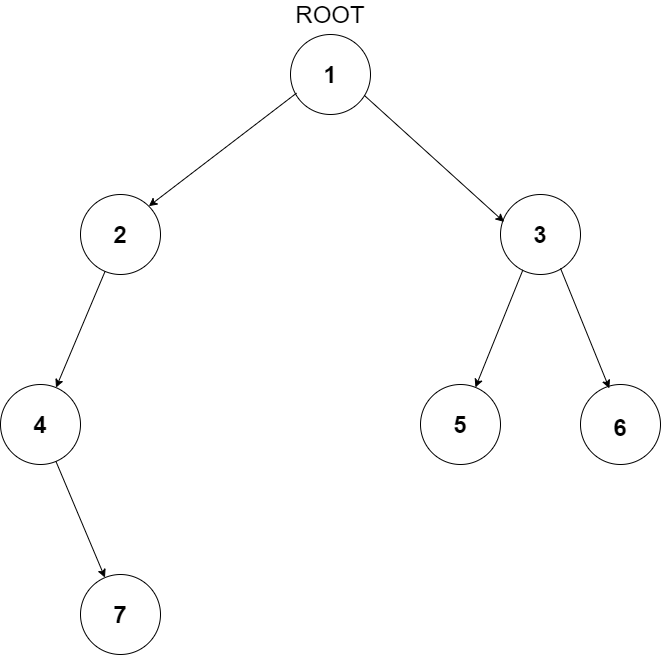LCA In A BST
You are given a binary search tree of integers with N nodes. You are also given references to two nodes P and Q from this BST.
Your task is to find the lowest common ancestor(LCA) of these two given nodes.
The lowest common ancestor for two nodes P and Q is defined as the lowest node that has both P and Q as descendants (where we allow a node to be a descendant of itself)
A binary search tree (BST) is a binary tree data structure which has the following properties.
• The left subtree of a node contains only nodes with data less than the node’s data.
• The right subtree of a node contains only nodes with data greater than the node’s data.
• Both the left and right subtrees must also be binary search trees.
Input Format:
The first line contains an integer 'T' which denotes the number of test cases or queries to be run. Then the test cases follow.
The first line of each test case contains two space separated integers P and Q, the nodes whose LCA we have to find.
The second line of each test case contains the elements of the BST in the level order form separated by a single space.
If any node does not have a left or right child, take -1 in its place. Refer to the example below.
Example:
Elements are in the level order form. The input consists of values of nodes separated by a single space in a single line. In case a node is null, we take -1 in its place.
For example, the input for the tree depicted in the below image would be :

1
2 3
4 -1 5 6
-1 7 -1 -1 -1 -1
-1 -1
Explanation :
Level 1 :
The root node of the tree is 1
Level 2 :
Left child of 1 = 2
Right child of 1 = 3
Level 3 :
Left child of 2 = 4
Right child of 2 = null (-1)
Left child of 3 = 5
Right child of 3 = 6
Level 4 :
Left child of 4 = null (-1)
Right child of 4 = 7
Left child of 5 = null (-1)
Right child of 5 = null (-1)
Left child of 6 = null (-1)
Right child of 6 = null (-1)
Level 5 :
Left child of 7 = null (-1)
Right child of 7 = null (-1)
The first not-null node (of the previous level) is treated as the parent of the first two nodes of the current level. The second not-null node (of the previous level) is treated as the parent node for the next two nodes of the current level and so on.
The input ends when all nodes at the last level are null (-1).
Note :
The above format was just to provide clarity on how the input is formed for a given tree.
The sequence will be put together in a single line separated by a single space. Hence, for the above-depicted tree, the input will be given as:
1 2 3 4 -1 5 6 -1 7 -1 -1 -1 -1 -1 -1
Output Format :
For each test case print the LCA of nodes P and Q.
Output for every test case will be printed in a separate line.
Constraints:
1 <= T <= 100
1 <= N <= 5000
0 <= Data <= 10^6 and Data != -1
Time Limit: 1sec
CodingNinjas
author
2y
Depth - First Traversal
We will traverse the BST in a depth-first manner. The moment we encounter either of the nodes P or Q, we will return some boolean flag. The least common ancestor would then be ...read more
CodingNinjas
author
2y
Recursive Approach
The lowest common ancestor of two nodes P and Q would be the last ancestor in terms of depth of the node, which is common to both the nodes. The key observation here is that for the ...read more
CodingNinjas
author
2y
Iterative approach
We can also use an iterative approach to find out the LCA of two nodes P and Q.
The algorithm will be -
- Let the current node in the iteration be ‘currNode’.
- While currNode is not equal...read more
Add answer anonymously...
Top Cisco Networking Academy Software Engineer interview questions & answers
Popular interview questions of Software Engineer
>
Cisco Networking Academy Software Engineer Interview Questions
Stay ahead in your career. Get AmbitionBox app

Helping over 1 Crore job seekers every month in choosing their right fit company
65 L+
Reviews
4 L+
Interviews
4 Cr+
Salaries
1 Cr+
Users/Month
Contribute to help millions
Get AmbitionBox app